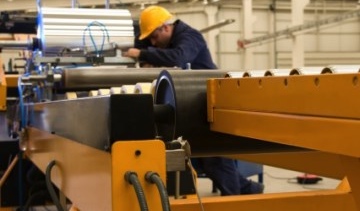A Quick Guide to Lean Manufacturing Tools

One of the basic fundamental tools when it comes to lean manufacturing that could really help any business is the 5S approach. This is an organizing and structuring technique that helps in eliminating waste and clutter. Having a set place for everything and being clean is always the key. The 5S stands for Seiri or sorting things, Seiton or setting things in order, Seiso or daily maintenance, Seiketsu or simply known as standardization and Shitsuke or sustainability which all stems from Japanese meanings.
By applying the 5S can help in cutting costs and reducing waste to your business' day to day operations. Cellular manufacturing and capacity planning have got something to do with organizing and not just the workplace but the actual work as well. Work cells and other designated work areas, minimizing the movement of things and people, certain spaces for activities and thus, lowering the cost. In operational sense, what this mean is that, no waiting, no batching, no queuing and no delays only easy flow and smooth operations.
Poka Yoke or otherwise known as mistake proofing are safeguarding and reducing the defects to zero is at the centre of this approach. It highlights problems as they occur and not letting mistakes, errors oversights and errors are slipping through is the key.
The processes are designed intentionally around this principle in order to become more efficient and can help your business to cut down on waste, scraps and cost. The Single Minute Exchange of Dies or SMED is promoting speedy change over the business, operations and manufacturing. Keep in mind that quality and time matters as they are equivalent to profits. There are other lean manufacturing discussions at http://www.ehow.com/info_8068416_five-principles-lean-manufacturing.html.
Two of the things that you can never change are the competitive advantage and breakthrough profit. Lean manufacturing is bringing with the awareness and appeal to take note and observe the things around you including movement, waste, cost, scrap and clutter and then doing something real, constructive and meaningful out of it.
With regards to lean manufacturing tools, there are 2 questions that should be asked by several businesses and these are the improvements that could and should be made. The things that can affect your incoming revenue must be given enough attention are customer priorities. Things such as lead, quality, waiting, cycle time, inventory, cost as well as other types of internal processes that could affect customers are internal and controllable, which should be dealt with immediately.
If you are into boosting the operation of your business, you must be able to learn how to use lean manufacturing tools correctly and get rid of unnecessary things in your firm.